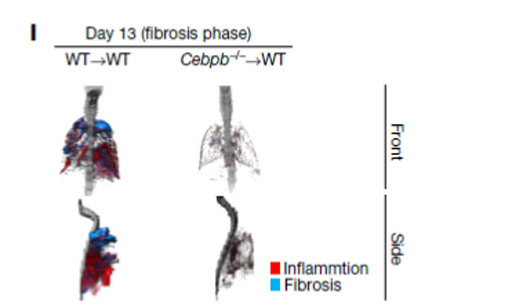Abnormal Immune Cells Involved in Causing Fibrosis
By LabMedica International staff writers
Posted on 10 Jan 2017
Using a mouse model, researchers have discovered a form of atypical monocyte as well as a committed progenitor that are involved in development of fibrosis.Posted on 10 Jan 2017
Fibrosis is a form of scarring that, if uncontrolled, can cause deleterious thickening of tissues. Although it is known that an activated immune system can lead to fibrosis, which specific cells are responsible continuous to elude researchers.

Image: An MRI analysis – Lack of SatM resulted in resistance to fibrosis in mice (Image courtesy of laboratory of Prof. Akira, IFReC, Osaka University).
Scientists at the WPI Immunology Frontier Research Center (IFReC) of Osaka University (Osaka, Japan) have now identified a subgroup of cells, a class of monocytes with strange morphology, involved in causing fibrosis. "The cells had a bi-lobed segmented nuclear shape and many cytoplasmic granules. We therefore called them 'Segregated nucleus atypical monocytes (SatM)'," said Prof. Shizuo Akira, head of the Host Defense Laboratory at IFReC.
To identify this subgroup, the researchers examined immune cell subpopulations that predominantly appeared in fibrosis and found that "These cells were regulated by C/EBPβ," said Prof. Akira. Detailed examination of immune cells showed that C/EBPβ mutant mice, unlike normal mice, produced no SatM, whereas no other observed immune cell population was changed. The mice were also significantly more resistant to fibrosis. On the other hand, when the mutant mice were exposed to SatM, their susceptibility to fibrosis rose.
Although Prof.Akira, first author Dr. Satoh, and colleagues describe SatM as a subset of monocytes, SatM showed characteristics that suggested they may be hybrids of different immune cells. Gene analysis of SatM "showed granulocyte markers, but SatM are definitely not granulocytes. [This] cell type is one of monocyte," said Prof. Akira.
Additional study found the progenitor cells responsible for producing SatM: adoptive transfer of these progenitors into mutant mice unable to produce SatM resulted in a SatM population, and C/EBPβ was found to be essential for maintaining the progenitors.
The ability to detect cells specifically related to fibrosis gives hope for new, more targeted therapies. "Decades of research have shown that immune cells are extremely diverse," said Prof. Akira, "Clear definitions of the subpopulations are essential for properly diagnosing and treating diseases. Our discovery of SatM should improve therapeutic strategies against fibrosis."
The study, by Satoh T et al, was published online December 21, 2016, in the journal Nature.
Related Links:
Osaka University














